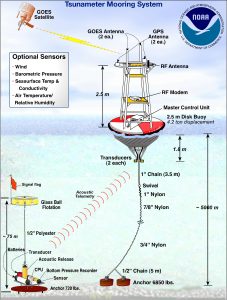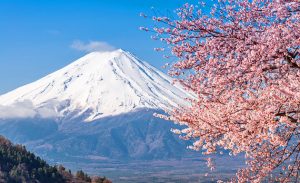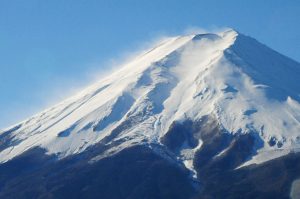Why do we like Japan?
Why do we like Japan? Why would people all around the world like to travel to Japan? There are a lot of reasons. For example, beautiful natural sceneries, iconic fashion style, attractive history and kind people. An essential point, in my opinion, is food. I like the food of Japan. I am a crazy fan of Ramen and fried food. The good news for me is that the exchange rate of Yen to Canadian dollar decreased after Abe was reappointed so that I could do shopping on Japan’s shopping website. When I was browsing that website, I noticed that the external packings have the wold “北海道産” for a lot of dairy products, such as Shiroi Koibito cookies, the Royce chocolates, milk pudding and ice creams. Additionally, the dairy products with “北海道産” are very popular and top-rated on many shopping websites (on Amazon also).

https://shop.r10s.jp/hokkaido-omiyage/cabinet/koibito/isiya005-pac01.jpg

http://i.ebayimg.com/images/i/171321318208-0-1/s-l1000.jpg

http://danielfooddiary.com/wp-content/uploads/2015/09/hokkaidomilk3.jpg

https://image.rakuten.co.jp/onakaegg/cabinet/gift/milkgift/nyu_gift_1.jpg

https://www.hokunyu.jp/en/common/images/effort/effort_lead_txt01.png

Some comments from Amazon of Shiro Koibito.
Why Hokkaido?
According to Karan (2005), initially, Hokkaido located in the North of Japan and it is the second largest island of Japan (the first is Honshu). Approximately Hokkaido is in the sub-cold zone which between north latitude 40 degrees to 45 degrees barely free from typhoon and moldy. Moreover, contrasting other crowded places of Japan, Hokkaido owns a quarter agricultural land in Japan. Furthermore, Hokkaido has a volcanic belt, the deposition of volcanic ash after volcanic eruptions makes the soil became fertilized. Additionally, the west of the Hokkaido is the sea of Japan, the southeast of it is the Pacific Ocean, and the northeast is the sea of Okhotsk. Under the influence of the ocean, the most islands of Hokkaido has the temperate oceanic climate or sub-cold zone oceanic climate. These reasons make Hokkaido become the important agricultural base of Japan. Wheat, potatoes, and dairy production ranked the first of Japan.

https://upload.wikimedia.org/wikipedia/commons/thumb/b/bc/Regions_and_Prefectures_of_Japan_2.svg/1200px-Regions_and_Prefectures_of_Japan_2.svg.png
Hokkaido and Europe
There are 14 sub-prefectures of Hokkaido, the cold weather of Kushiro sub-prefecture, Nemuro sub-prefecture and Soya sub-prefecture is not capable of carrying out agricultural activities. However, These three sub-prefectures are the most abundant dairy industry over the whole country. We all know that the stock farming in Europe is well developed and organized. Comparing Europe farm and Japan farm, they have four crucial points in the same. First, they have the similar oceanic climate, which is not so cold in the winter and not so hot in the summer. It also has an evenly year precipitation, no drought water-logging, which is suitable for pasture growth, and for the development of stock farming. Second, they all have a significant proportion of plains with fertile earth. Third, they all have dense river network with short rivers originated from mountains which provides irrigation. Finally, Japan and many European countries are developed countries with the higher technical management of stock farming. Overall, accompanying the excellent natural condition and acquired development, the dairy productions of Hokkaido become very famous around the world.

http://www.travel-around-japan.com/map-k11-hokkaido-pref.png

https://upload.wikimedia.org/wikipedia/commons/thumb/2/2e/Hokkaidomap-en.png/722px-Hokkaidomap-en.png

http://footage.framepool.com/shotimg/qf/408859065-tsurui-cow-herd-grazing-pasture.jpg

https://www.jnto.go.jp/eng/wp-content/uploads/2016/06/gr43_07.jpg
Conclusion
However, I am also considering the different eating habits between Asian and European, specifically the East Asia and the Europe. The dietary structure of the East Asia is mainly herbivorous, while in Europe is the carnivore. At first, Hokkaido had barely any stock farming. Because some places are too cold to grow plants, the Japan government started to develop stock farming in those areas instead of planting. This is a good choice since Kushiro sub-prefecture, Nemuro sub-prefecture and Soya sub-prefecture are with particularly favorable natural conditions of stock farming. On the other hand, the dairy production also brings effective economy profits to Japan, especially in tourism. People who travel to Japan would consume those dairy productions for themselves or as the gifts for their families and friends. Therefore, nonetheless herbivorous or carnivore, it is important to adjust measures to local conditions. Besides, I love the winter of Hokkaido and its snow. One of my friend who is from the north of China always makes the joke on me: “It is not exciting when there is snow. It is only excited for you and other southern guys.”

https://jtb.com.sg/wp-content/uploads/2017/05/Day-3.png

http://hana3939.com/wp-content/uploads/2014/03/213e5aa1ad298eb0be26f0db2805782e.jpg
Reference
P.P. Karan (2005) Japan in the 21st Century: Environment, Economy and Society, Lexington, The University Press of Kentucky.


















